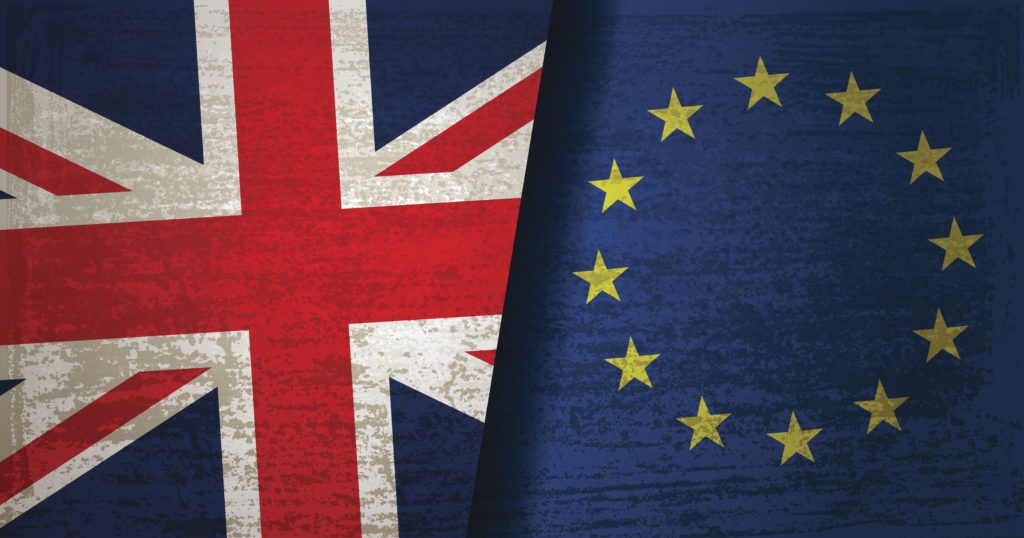UK announces ‘innovative’ customs ‘partnership’ for post-Brexit trade, SMMT wants interim single market access
16 August 2017

16 August 2017
The SMMT and Freight Transport Association (FTA) have largely welcomed the first landmark UK policy paper outlining Britain’s Brexit negotiating strategy with the EU, which involves a proposal for an ′innovative and untested’ new UK-EU customs ′partnership’, which would avoid customs checks and enable ′frictionless’ trade. This would involve importers from outside the UK and EU paying whichever tariff out of the UK or EU is higher, and then reclaiming the difference if the goods are sold in the region with the lower tariff. The plan also includes a transition period where UK customs arrangements remain equivalent to that of the EU; the SMMT, however, continues to call for full single market access during this period.
Britain aims to remain closely aligned to the existing EU customs system both during a transition phase following Brexit in 2019, as well as in the final customs arrangement. The proposals are for this transition phase to involve the creation of a new, temporary customs union with the EU – effectively aiming to create conditions substantially the same as now for a time after the UK leaves the European Union. This transition phase would last around two years, according to Brexit secretary David Davis, and certainly has ′to be done by the [next general] election,’ setting a deadline of 2022 at the latest – which meets the EU’s demand that the transition last no longer than three years.
The SMMT responded positively to much of the plans. Chief Executive Mike Hawes said: ′It is encouraging that government recognises the need for interim arrangements which must be in place,’ adding that this would ′take some time pressure off’ and give the automotive industry ′certainty to attract investment and make planning decisions,’ with investment in the sector currently threatening to fall precipitously by 75% from two years ago.
Customs arrangements are particularly crucial for the automotive industry, due to Rules of Origin requirements as well as ′just in time’ production lines – and low margins that have little room for flexibility.
However, the SMMT warns that maintaining the substance of customs arrangements will not be enough, and that single market access is also essential for a smooth transition period. Hawes says: ′To maintain frictionless trade and ensure business only has to adjust to one change, interim arrangements must retain membership of a customs union with the EU and full participation in the single market. Any other arrangement risks additional administration, delays and costs, undermining the competitiveness of UK exporters and increasing the costs of imports. We will continue to work with government to try and avoid such an outcome.’
The FTA, whose members operate half the UK fleet with more than 220,000 goods vehicles, was fully positive of the plans, but called for experts to play a greater role in negotiations to achieve the best deal. Deputy Chief Executive of the FTA James Hookham said: ′The FTA is keen to play its part in helping to develop efficient customs procedures post-Brexit, which will keep trade flowing freely, and urges the government to include representatives of the sector, with specialist knowledge, at the negotiating table to help reach the best possible deal for Britain.’
The UK’s ideal final EU trade arrangement for a UK-EU customs ′partnership’ involves a ′repayment mechanism,’ whereby importers pay a tariff when a good enters the UK-EU area. This tariff is equal to whichever out of the EU and UK has set the higher tariff. If the good is then sold in the region with the lower tariff, the difference is claimed back. This clever system, which the paper calls ′innovative and untested,’ would allow for there to be no customs checks at UK-EU borders. However, it would have to be agreed by all EU member states, and is dependent on the EU trusting the UK to keep the EU’s customs borders secure. Some EU members see the UK as a weak link for customs enforcement, with EU anti-fraud investigators having accused the UK of failing to prevent Chinese criminal gangs using UK customs weaknesses to evade customs duties on clothes and shoes.
In the event that such a system cannot be agreed, the policy paper also outlines a second more traditional model, but says this alternative is undesirable as it admits it involves ′an increase in administration,’ especially for businesses.
This second approach involves extending current UK customs checks to EU goods, but with heavy investment in new technologies such as number plate recognition to try to avoid physical checks at the border, mainly at ports. This would prevent the need to erect new lorry parks and border posts. Number plate recognition could even be linked to customs declarations for what the vehicle is carrying, preventing the time-costly need for vehicles to be stopped and checked. The UK would also allow some large trusted traders to self-assess and calculate their own customs duties.
Nevertheless, UK officials concede both models would still require a significant degree of new red tape for businesses, due to shifting the reporting burden onto exporters at the point of departure rather than erecting physical checking points. All still remains subject to negotiation with the EU, with the EU’s timetable requiring the UK to make ′significant progress’ on agreeing a divorce bill with the EU (as well as rights for EU citizens and the Irish border issue) before trade negotiations can begin.
The decision on whether this ′significant progress’ has been met will come in October – which is the time businesses should watch for to ensure that Brexit negotiations are on track.